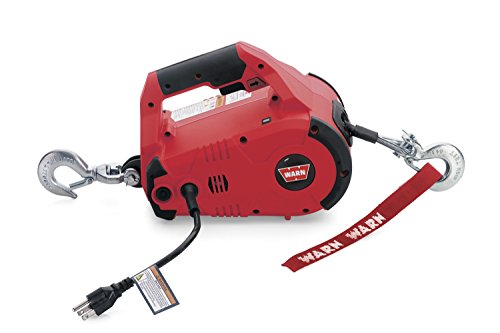[url=https://classicgoldwings.com/forum/viewtopic.php?p=210750#p210750 said:
saganaga » What brand? I've been fond of Continental Gatorskins, which are spendy, but grippy. Also don't last very long - I think I get 2,000 miles out of them, more or less.
Yep. My Synapse's original wheelset came with Mavic Yskon in 23C with it's Ultegra kit, I've got a set of wheels with Dura-Ace hubs on it right now. Prior to the Synapse, my primary road frame was a '79 Paramount, Campy Super Record group with Mavic 700C rims, I ran Conti Super Sport 25Cs on it for oh... decades.
In '83, I was cited for 74mph in a 55 zone, while riding a Fuji Touring Series 5 down Highway 52 into Guttenberg, Iowa. 48/36 hole Wolber clincher rims with Phil Wood hubs and a 54/13 on 175mm arms... bag on the rear rack, no panniers. Clips and straps, cheap sunglasses, touring shorts and a Bell Biker II helmet. The ticket was thrown out for several reasons, first being that it was a 'motor vehicle regulation' (not powered), I did not have a driver's license to revoke (I was 15), and the judge just plain-old-didn't-believe that a kid on a bicycle could do that... the radar 'must have' gotten 'something else'.
My best defense (that I didn't have to use) was that my Cateye Solar only indicated 72mph... :smilie_happy:
I don't have any bicycles with disk brakes... mine are 'old fashioned'. I've got Ultegra side-pulls on my Synapse... the Paramount has Campy Record, and the Series 5 (yeah, I still have it) has factory SunTour cantelevers with Mathauser pads...
...And if THAT was a blast-from-the-past... my high-school Road Race frame (yeah, I still have it) is a shortened-chainsay Columbus-tube Schwinn Voyageur SP with Modolo Professionals and sintered-iron pads, with 46/56 chainrings and a 12-16 'corncob' 5-speed... that was before gearing restrictions in Junior Men's...
Oh my, how I digress...
Disk brakes have one really huge advantage... temperature. Back in the days when I raced against guys riding Ciocc, Eddie Mercx and 3Renshos, those guys ran sew-ups on 700C rims. A 'sew up', is a tire-tube combination that is totally encased... literally 'sewed shut'... and held onto the rim by virtue of stretch tension and adhesive. The advantages of sew-ups, at least for racing, were weight, weight, weight, and ride. The rim of a sew-up had no 'clincher' flange, so it weighed about half what a clincher rim of same vintage did. There was no wire (or later, kevelar) bead in the rim, and the inner tube was damned-near prophylactic. The rubber TUBE in my 'clincher' tire was almost as heavy as the entire 'sew up' assembly. IIRC, the popular 'sew ups' were Clement, Vittoria, and Montello... and yes, they DID ride nice, and they certainly did weigh a whole lot less. They seemed like feathers compared to the Weinmann Concaves I rode on. Of course, a sew-up, when pre-prepared with glue, was pretty fast to do an install, and because of the way the rim profile and tire sat... if you had a flat, it would generally stay put long enough for you to get to a 'good spot' (i.e. long enough for your team 'domestique' to meet you) for a tire change... important for an unsupported road race, but nowdays, a flat just means your support crew swaps the whole wheel in seconds.
{it was a 'traditional' tactic for teams to have riders called 'domestiques', who's purpose was to provide support to their team's primary competetors with anything from food and water, to a spare wheel/tire assembly when a flat occurred. The Domestique would pull off their OWN wheel, stick it on the primary rider's cycle, and send them on, then repair the damaged tire, and 'catch up' with the pack afterwards. It was normal for a 'domestique' to be selected that had similar physical proportions, and even set up his own bicycle to match the primary competetors, so they could simply switch the whole bicycle, too...}
But anyway, the WORST... and I mean WORST thing that you could ever have happen with a sew-up tire... was to have it roll off the rim. When that happened, you'd 1) be rolling on a paved road on bare metal (soft aluminum, btw, and damned little of it), and... there'd be a loose tire flopping around your spokes, hub, and fork or chainstays. Aside from not being properly mounted or glued, the other reasons for rolling a tire off the rim, was overinflation, underinflation, and having the GLUE soften up on you.
Overinflation and soft glue happened because the tire/rim got too hot.
The tire/rim get hot when you use the brakes alot.
See, the bicycle tire has VERY little air volume, and in proportion to it's ground contact area, a considerably high load. A car tire, at 30psi, presents very little contact pressure to the road. A bicycle tire at 150psi, though, presents LOTS when a 200lb rider is on it... and there's not much air in that tire holding that load... the tire can get rather warm on sunny asphalt, but when you're going down a mountain, those brakes will get that rim HOT in a big hurry, and when the rim gets hot, the air in the tire is trying to expand, and eventually, SOMETHING has to give.
A disk brake doesn't do that... and THAT is the biggest advantage. On fat-tire bikes, it has other advantages... packaging space, mud/water protection and stuff.





















































